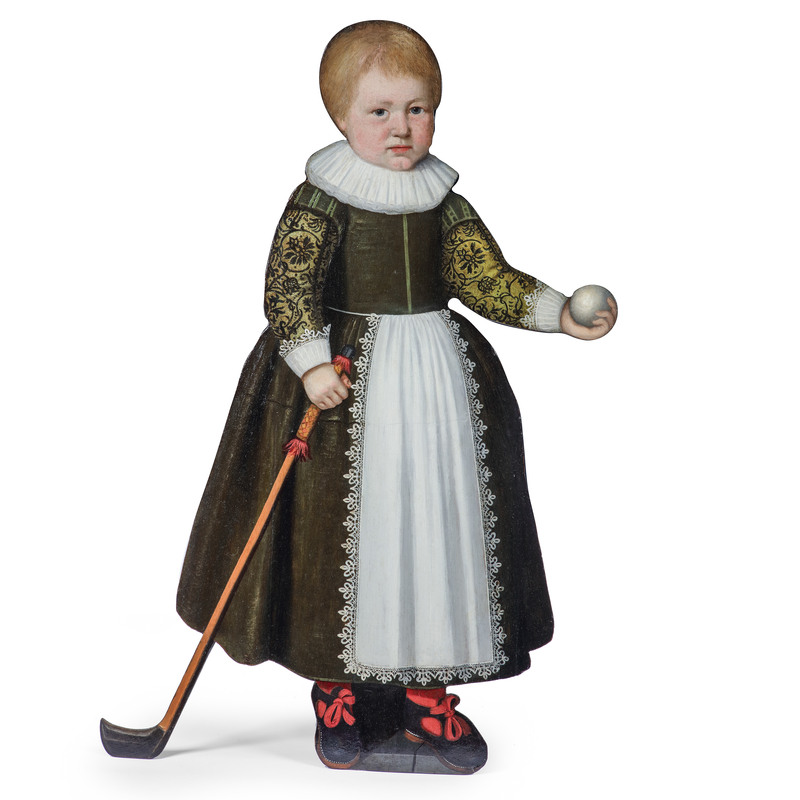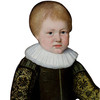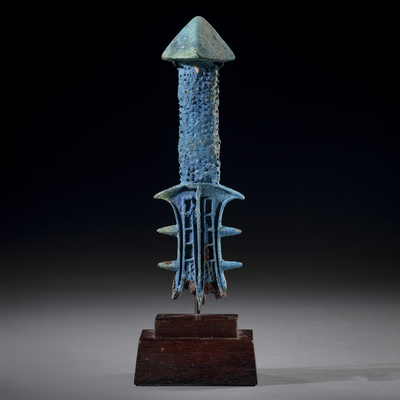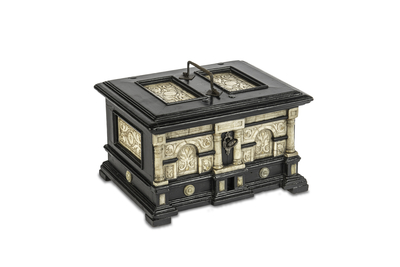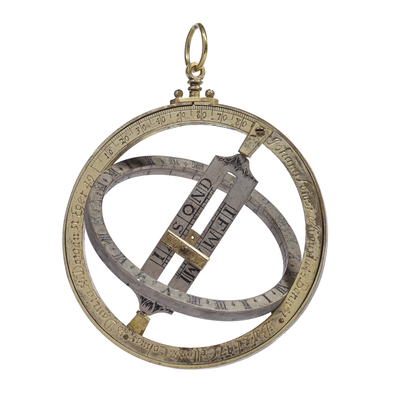Dummy board
Global shipping available
- Origin
- The Netherlands
- Period
- Second quarter 17th century
- Material
- Polychromed oak
- Height
- 83.5 cm
- Width
- 55 cm
- Literature
J. Baptist Bedaux & R. Ekkart (ed.), Kinderen op hun mooist - Het kinderportret in de Nederlanden 1500-1700, Haarlem 2000, pp. 227 - 229, 299, cat. no. 60.
A. Houbraken, De groote schouburgh der Nederlantsche konstschilders en schilderessen (...) deel II, Den Haag 1753. p. 220, 221.
P. Huys Janssen & S. ten Brink, Schijn bedriegt - Trompe-l’oeil en de kunst van illusie, ‘s Hertogenbosch 2013, p. 27, 29, cat. no. 8.- Museums
See a similar dummy board in The National Trust Collection, inv. no. 1171015.2, Chirk Castle, Wrexham.
Questions about this object?
Please use one of the contact options below:
Description
This 17th century dummy board of a boy with blue eyes and short blond hair is dressed in a dark dress with a tight bodice and flared skirt. The brocade sleeves are richly decorated with floral motifs, and he is wearing a protruding lace collar and a batiste apron. The boy's sleeves and apron are trimmed with delicate lace. Beneath the dress, red stockings and tied shoes are visible. The trompe-l'oeil effect is enhanced by the tiles on which the boy is standing.
Dummy boards are life-size two-dimensional wooden figures painted to look like people. The origin of dummy boards probably lies in the Netherlands in the early 17th century, and is related to the trompe l'oeil, in which lifelike scenes were painted. In Dutch they are called 'fireplace dolls' because they were placed in front of the empty fireplace in the summer, but they would also have found a place in other corners of the house. This unusual form of home decoration quickly became popular and dummy boards were manufactured until the 19th century. Some suggest that they served as company, or as a joke: Arnold Houbraken describes in 1753 that a dummy board was mistaken for a maid, to the hilarity of the guests: ‘Ja men verhaald dat zoodanig een beeld om de klucht van zeker Heer, wanneer hy gasten onthaald had, geplaatst zynde aan de deur of den uitgang van de kamer, sommige der zelven die het voor de huismeit aanzagen, voor die gerieflykheid haar met een drinkpenning beschenken wilden, dog hun hand daar tegens aanstieten, en zig bedrogen, en dit dus stof tot lachen gegeven heeft.’
Arnould Houbraken refers to the Dordrecht painter Cornelis Bisschop (1630 - 1674) as the first person to make such dummy boards: ‘Hy is wel de eerste, zoo niet de beste, geweest, welke allerhande soort van Beelden, op hout geschildert met levende koleuren, en uitgehakt, dienende om ergens in een hoek, of poortaal te plaatsen, wel het natuurlykst gemaakt, en 't geestigst verzonnen heeft.’ Yet there are no examples of such dummy boards with Bishop's signature. A dummy board of a child in a high chair that until recently was attributed to him is attributed by Baptist Bedaux & Ekkart in 'Kinderen op hun mooist' to the Haarlem portraitist Johannes Verspronck (1603 - 1662). The dummy boards were also very popular in England and a number of Dutch pieces are currently in English collections, see a similar girl with a basket of apples in the National Trust Collection, inv. no. 1171015.2, in Chirk Castle, Wrexham.
The boy holds a kolf stick and a kolf ball. The game of kolf, which was played from the late Middle Ages onwards, was enjoyed by children and adults alike. A round ball was hit in order to cover a set course in as few strokes as possible. Special courses were built for this purpose. The kolf sticks were weighted at the bottom with a lead slug, this boy is also holding a weighted kolf stick. Each player had his own kolf, recognisable by the coloured ribbons and any marks on the stick. Mainly boys were depicted with a kolf ball and stick. Kolven laid the foundation for the later golf.
